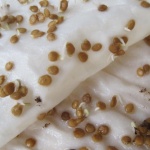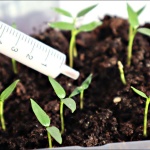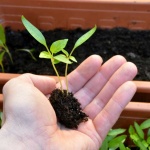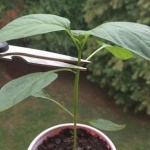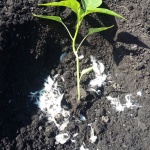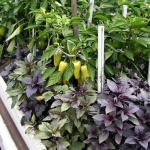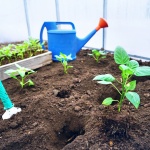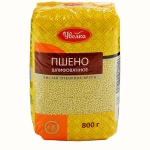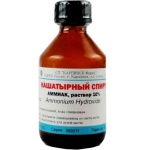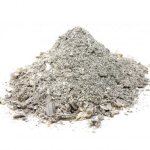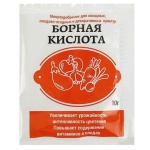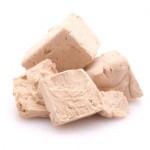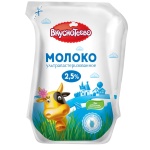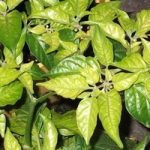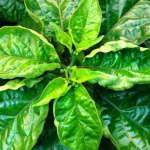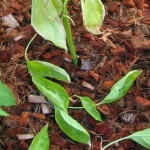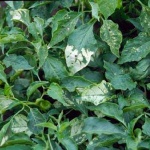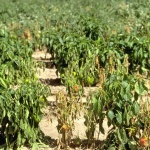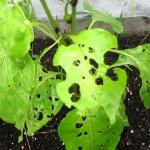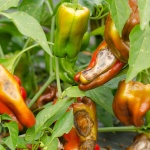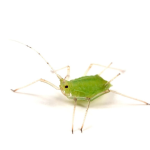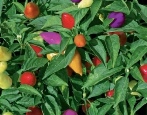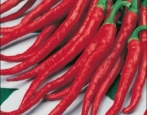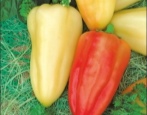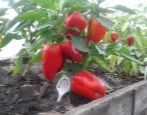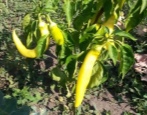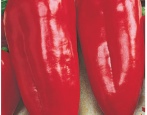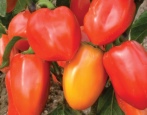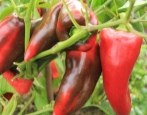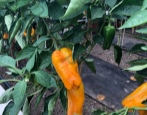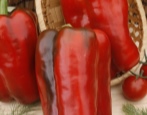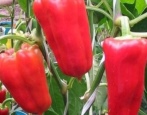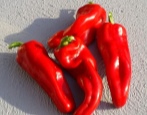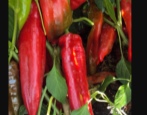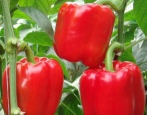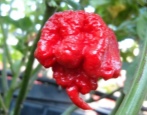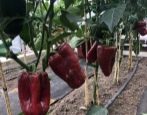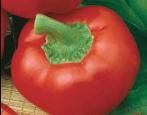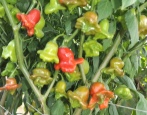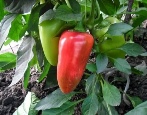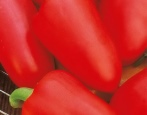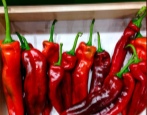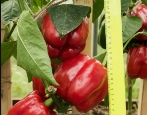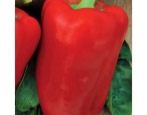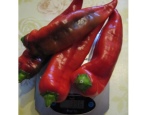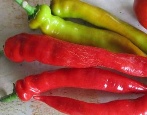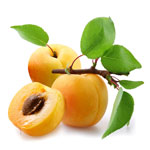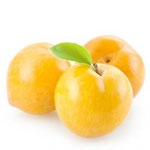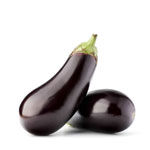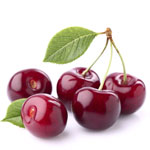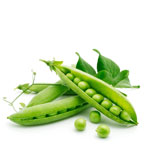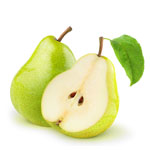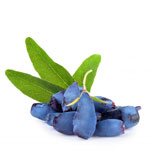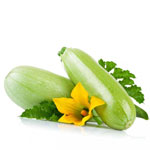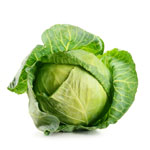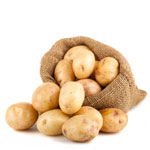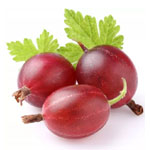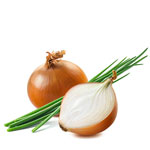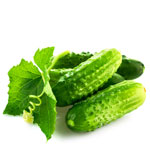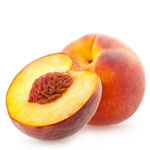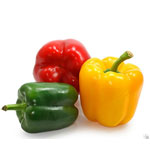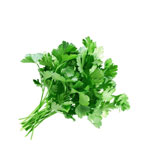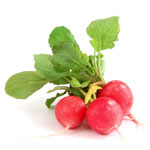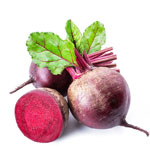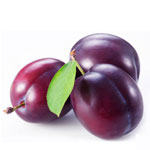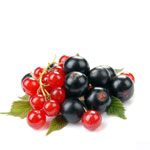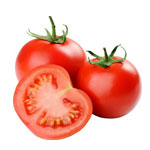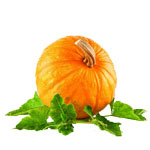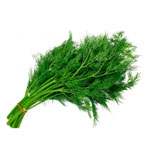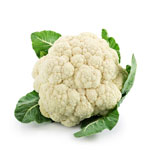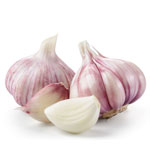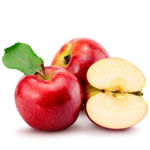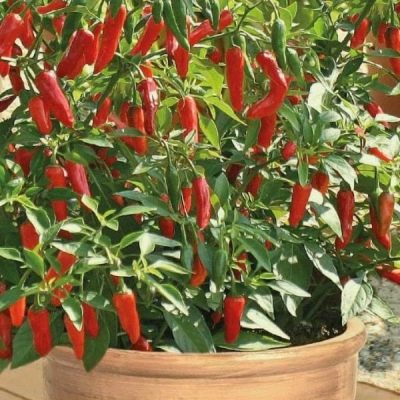
- Authors: Ognev V.V., Maksimov S.V., Klimenko N.N.
- Year of approval: 2012
- Bush height, cm: up to 45
- Growth type: undersized
- Fruit shape: conical
- Fruit weight, g: 3-5
- Fruit color: dark green in technical ripeness, red in biological ripeness
- Ripening terms: early
- Ripening month: from July to September
- Fruit size, cm: 5
Drakosha pepper is a spicy variety with strong immunity and increased resistance to external influences. It is worth considering in more detail why the plant is valued by gardeners, and also to disassemble the features of growing a crop.
Description of the variety
Drakosha is a variety suitable for growing both in the open field and at home on a balcony or in a greenhouse. Specifications:
type - large-fruited;
bushes are compact;
stems are powerful, strong;
leaves are dark green.
During the flowering period, the variety forms small cream-colored flowers, which quickly fade and turn into fruits.
Characteristics of the appearance of plants and fruits
Medium-sized bushes rise to a height of 45 centimeters. Pepper belongs to a group of plants with an early ripening period, fruit characteristics:
shape - conical;
weight - up to 3-5 grams;
length - up to 5 centimeters;
the skin is thin, dark red.
Peppers have a rich, but unobtrusive aroma. The peel wrinkles towards the end of ripening, the fruits are suitable for long-distance transportation.
Purpose and taste
Tasters note a pronounced pungent taste, for which the pepper got its name. The fruits are used to prepare second courses, as well as to create pastes, sauces and other additives.
Ripening terms
On average, the fruits are formed already 95-100 days from the moment of disembarkation. When growing peppers in the open field, the ripening period is shifted.
Yield
From one bush, it is possible to get an average of 0.2 kilograms of red hot peppers. If necessary, the yield indicator can be increased if optimal growing conditions are achieved.
Landing scheme
The cultivation of Drakosh peppers is carried out through seedlings. Therefore, first of all, you need to take care of the preparation of the seeds. Here are the main steps.
Selection. Seeds are first collected, leaving undeformed and large samples. A glass of warm water will help in this, where the seeds are placed for a day. After this time, empty seeds rise to the surface, they must be removed.
Disinfection. Carried out using a solution of potassium permanganate. The procedure will help strengthen the plant's immunity, as well as prevent attacks from pests and diseases.
Treatment. The stage is carried out with the use of stimulants to accelerate the growth of the bush.
Peat pots are used for planting. It is better to plant the seeds in late February or early March separately, so that later it will be easier to transplant the peppers into the ground. The planting depth of seeds is 1-2 cm.
After planting, the land is watered abundantly using settled water. At the end, the pots are covered with transparent material and placed in a warm and sunny place. After 60-70 days, the seedlings are transferred to the ground, after hardening the culture in 14 days. Landing scheme:
maintain a distance of 40 cm between the rows;
between seedlings recede up to 60 cm;
the depth of planting seedlings should not exceed 7 cm.
Peat pots will help get rid of the need to make a fertile mixture on your own.
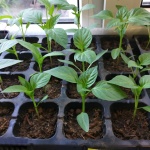
To get a large and tasty harvest of pepper, you need to take care of the seedlings in advance. When growing pepper seedlings, you need to correctly determine the sowing time, pre-sowing seed treatment, prepare the necessary container and soil.
Growing and care
You can achieve maximum yields by following agrotechnical recommendations. Here are the main points to consider.
Watering. In the first 7 days, watering the peppers is not recommended, they take root. After Drakosha should be watered 1-2 times a week, taking into account the temperature and humidity conditions. For example, when growing peppers in the open field during a drought period, watering should be increased, and in rains, on the contrary, reduced. In the case of planting peppers in a greenhouse, the frequency of adding water to the soil does not change.
Top dressing. Plants are usually fertilized 3-4 times per season, with particular attention to vegetation, flowering and fruiting. Organic or complex formulations are often used as top dressing. And also mineral fertilizers are often applied to the soil.
Loosening and weeding. The necessary procedures that will help accelerate the growth of the bush, as well as reduce the risk of developing diseases or pest attacks.
Additionally, it is worth pruning dried or deformed elements of the plant in order to direct all the forces of the pepper to the development of the fruits. Finally, a crop tie can be carried out if necessary.
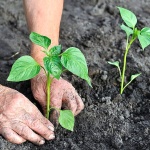
To harvest a tasty and rich harvest of pepper, you need to comply with all the conditions of agricultural technology, and proper care begins with planting plants. Before planting pepper in open ground, it should be prepared. It is also important to take care of the seedlings and planting space in advance.
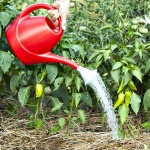
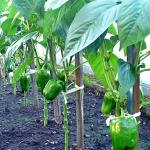
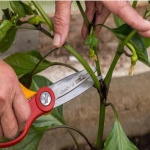
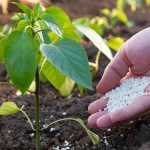
For good growth of pepper bushes and active fruiting, you need to regularly apply mineral and organic fertilizing to the soil. It is necessary not only to choose the right formulations, but also to use them at the right stage in the development of culture. The frequency of top dressing is always individual. It depends directly on the composition of the land on your site. The poorer the soil composition, the more often you will need to feed the pepper.
Required climatic conditions
Planting seedlings is carried out mainly in February. The transplant is performed towards the end of April. When carrying out planting work, preference should be given to sunny and warm days. The air temperature should rise to +15 degrees, and the soil - to +8 degrees.
Before planting seedlings, the seedlings should be hardened, as well as loosening and fertilizing the soil.
Disease and pest resistance
The Drakosha variety is a resistant shrub that is not affected by pests and diseases. To strengthen immunity, it is recommended to carry out preventive treatments with special formulations:
"Etisso";
"Confidor";
Aktara.
It is recommended to spray the bushes before flowering and fruiting, so as not to harm the elements of the plant and not spoil the fruits. A careful approach to the cultivation of peppers will help to achieve high yields.
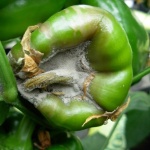
Pepper is one of the most common vegetables in home gardens. This culture is quite stable and unpretentious. However, under certain conditions, this plant can suffer from infections and harmful insects. Before treating peppers for diseases or pests, you need to find out the cause of the problem, otherwise the treatment may be ineffective.
